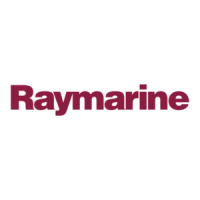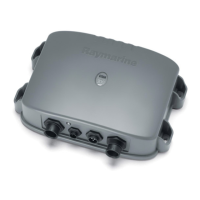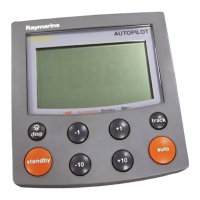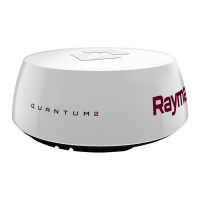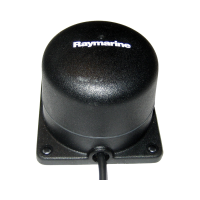162
HSB Series LCD Display
Pin 1, screen
Pin 3, blue
Pin 2, white
HSB connector
HSB connector
Pin Pin name Function
1 CGND Screen
2 HSVB_POS SeaTalk HSB
3 HSVB_NEG SeaTalk HSB
2 3
1
HSB
D4253_2
Rear of Display Unit
The HSB cable is supplied with a blanking plug for the inter-unit cable port.
This should be fitted to the repeater display. If the repeater display is fitted in an
exposed position seal the blanking plate with silicon compound.
SeaTalk
®
and NMEA In
The HSB Series display can receive a comprehensive range of data. The
primary data is described below:
Data Primary Uses Suggested Source
Heading Radar: North Up, Course Up modes NMEA Compass
Chart: modes/ vectors Compass connected to SeaTalk bus
Position Chart: own vessel position SeaTalk GPS connected via Auxiliary JB
MOB Existing GPS Navigator via SeaTalk bus
Radar: Waypoints and Marks Existing GPS (or Loran-C) navigator with
NMEA output
Speed MOB (also requires HDG data) As for position data
TTG and ETA calculations Log (speed through water)
Waypoint Radar: graphical display Existing GPS Navigator via SeaTalk bus
Chart: Waypoint and route transfer Existing GPS (or Loran-C) navigator with
NMEA output
Heading data should ideally contain both magnetic and true heading. If only one
is available then a source of magnetic variation should be connected.
Some other radars and chartplotters can exchange their cursors via SeaTalk.
Locked heading should be used for Course Up if available via SeaTalk.
Other data connected via a SeaTalk bus or via NMEA is generally displayed in
data boxes, e.g. depth, apparent wind angle and speed, time.
SeaTalk and
NMEA In
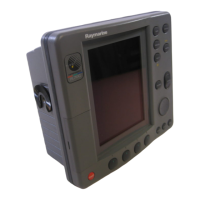
